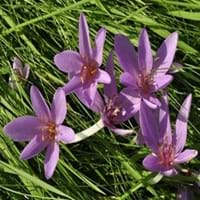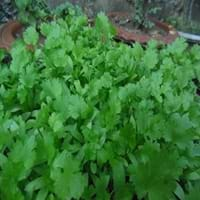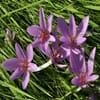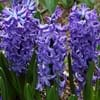Life Span
Perennial
Annual
Type
Bulb or Corm or Tuber
Herbs
Origin
Hybrid origin
Eastern Europe, Mediterranean
Types
boissieri , cupanii , hungaricum , kesselringii
Not Available
Number of Varieties
Not Available
Habitat
Temperate Regions
Damp forests, Farms, Fields, Forests, Open areas, Open Forest, Open Plains, open Woodlands, Subtropical climates, tropical environments, Tropical rainforest, Tropical regions, Wet forest, Wet ground, Wet Woods
USDA Hardiness Zone
Not Available
Not Available
AHS Heat Zone
Not Available
10-1
Sunset Zone
21,22
A1, A2, A3, H1, H2, 1a, 1b, 2a, 2b, 3a, 3b, 4, 5, 6, 7, 8, 9, 10, 11, 12, 13, 14, 15, 16, 17, 18, 19, 20, 21, 22, 23, 24
Habit
Clump-Forming
Upright/Erect
Flower Color
Purple, Violet
White, Light Pink
Flower Color Modifier
Bicolor
Bicolor
Fruit Color
Not Available
Tan, Sandy Brown
Leaf Color in Spring
Green
Green, Light Green
Leaf Color in Summer
Light Green
Green, Light Green
Leaf Color in Fall
Several shades of Green
Green
Leaf Color in Winter
Light Green
Light Green
Leaf Shape
Long Linear
Irregular
Plant Season
Spring, Fall
Spring, Summer, Fall
Sunlight
Full Sun, Partial Sun
Full Sun, Partial Sun
Growth Rate
Medium
Very Fast
Type of Soil
Loam
Loam, Sand
The pH of Soil
Acidic, Neutral
Neutral
Soil Drainage
Well drained
Well drained
Bloom Time
Late Summer, Early Fall
Early Summer, Summer, Late Summer
Tolerances
Drought
Drought
Where to Plant?
Ground
Container, Ground, Pot
How to Plant?
Divison, From bulbs, Seedlings
Seedlings, Stem Planting
Plant Maintenance
Medium
Medium
Watering Requirements
Keep ground moist
Do Not over Water, Keep ground moist, Never Over-water, Requires regular watering
In Summer
Lots of watering
Lots of watering
In Spring
Moderate
Moderate
In Winter
Average Water
Average Water
Soil pH
Acidic, Neutral
Neutral
Soil Type
Loam
Loam, Sand
Soil Drainage Capacity
Well drained
Well drained
Sun Exposure
Full Sun, Partial Sun
Full Sun, Partial Sun
Pruning
no pruning required
Remove damaged leaves, Remove dead or diseased plant parts, Remove shoots
Fertilizers
All-Purpose Liquid Fertilizer
fertilize in growing season, Phosphorous, Potassium
Pests and Diseases
Dry root rot, Pest Free
Bacteria, Bacterial leaf spot, Beet armyworm, Cutworms, Damping off, Damping-off, Powdery mildew, Red blotch, Root knot nematode, Watery soft rot
Plant Tolerance
Drought
Light Frost
Flower Petal Number
Single
Single
Fragrant Bark/Stem
No
Yes
Foliage Texture
Coarse
Fine
Foliage Sheen
Glossy
Matte
Attracts
Whiteflies
Caterpillar, Flying insects, Insects, Mites
Allergy
Poisonous to grazing animals
Itchy eyes, Red eyes, Runny nose, Sore eyes, Watery eyes
Aesthetic Uses
along a porch, deck or patio, Borders, Mixed Border, small hedge
Not Used For Aesthetic Purpose
Beauty Benefits
No Beauty Benefits
Not Available
Environmental Uses
Air purification
Air purification, Food for animals, Food for birds, Food for insects
Medicinal Uses
anti rheumatic, cathartic
anti-cancer, Fiber, Nutrients
Part of Plant Used
Root
Leaves
Other Uses
Showy Purposes
Used As Food, Used for its medicinal properties, Used as a spice, Used in salads
Used As Indoor Plant
No
Yes
Used As Outdoor Plant
Yes
Yes
Garden Design
Container, Cutflower, Foundation, Lawns and Turf, Mixed Border
Container, Edible, Herb / Vegetable
Botanical Name
COLCHICUM 'Lilac Wonder'
CORIANDRUM sativum
Common Name
Hybrid Autumn Crocus, Hybrid Meadow Saffron
Cilantro, Coriander
In Hindi
meadow saffron
धनिया
In German
Herbstzeitlose
Koriander
In French
Colchique d'automne
Coriandre
In Spanish
Estado de conservación
Cilantro
In Greek
meadow saffron
Κολίανδρο
In Portuguese
Colchicum autumnale
Coentro
In Polish
Colchicum autumnale
Kolendra
In Latin
autumnale
coriandrum
Phylum
Tracheophyta
Tracheophyta
Class
Magnoliopsida
Magnoliopsida
Family
Liliaceae
Apiaceae
Genus
Colchicum
Coriandrum
Clade
Angiosperms, Monocots
Angiosperms, Asterids, Eudicots
Tribe
Not Available
Coriandreae
Subfamily
Not Available
Apioideae
Number of Species
Not Available
Not Available
Importance of Meadow Saffron and Coriander
Want to have the most appropriate plant for your garden? You might want to know the importance of Meadow Saffron and Coriander. Basically, these two plants vary in many aspects. Compare Meadow Saffron and Coriander as they differ in many characteristics such as their life, care, benefits, facts, etc. Every gardener must at least have the slightest clue about the plants he wants to plant in his garden. Compare their benefits, which differ in many ways like facts and uses. The medicinal use of Meadow Saffron is anti rheumatic and cathartic whereas of Coriander is anti-cancer, Fiber and Nutrients. Meadow Saffron has beauty benefits as follows: No Beauty Benefits while Coriander has beauty benefits as follows: No Beauty Benefits.
Compare Facts of Meadow Saffron vs Coriander
How to choose the best garden plant for your garden depending upon its facts? Here garden plant comparison will help you to solve this query. Compare the facts of Meadow Saffron vs Coriander and know which one to choose. As garden plants have benefits and other uses, allergy is also a major drawback of plants for some people. Allergic reactions of Meadow Saffron are Poisonous to grazing animals whereas of Coriander have Itchy eyes, Red eyes, Runny nose, Sore eyes and Watery eyes respectively. Having a fruit bearing plant in your garden can be a plus point of your garden. Meadow Saffron has no showy fruits and Coriander has no showy fruits. Also Meadow Saffron is not flowering and Coriander is not flowering . You can compare Meadow Saffron and Coriander facts and facts of other plants too.





